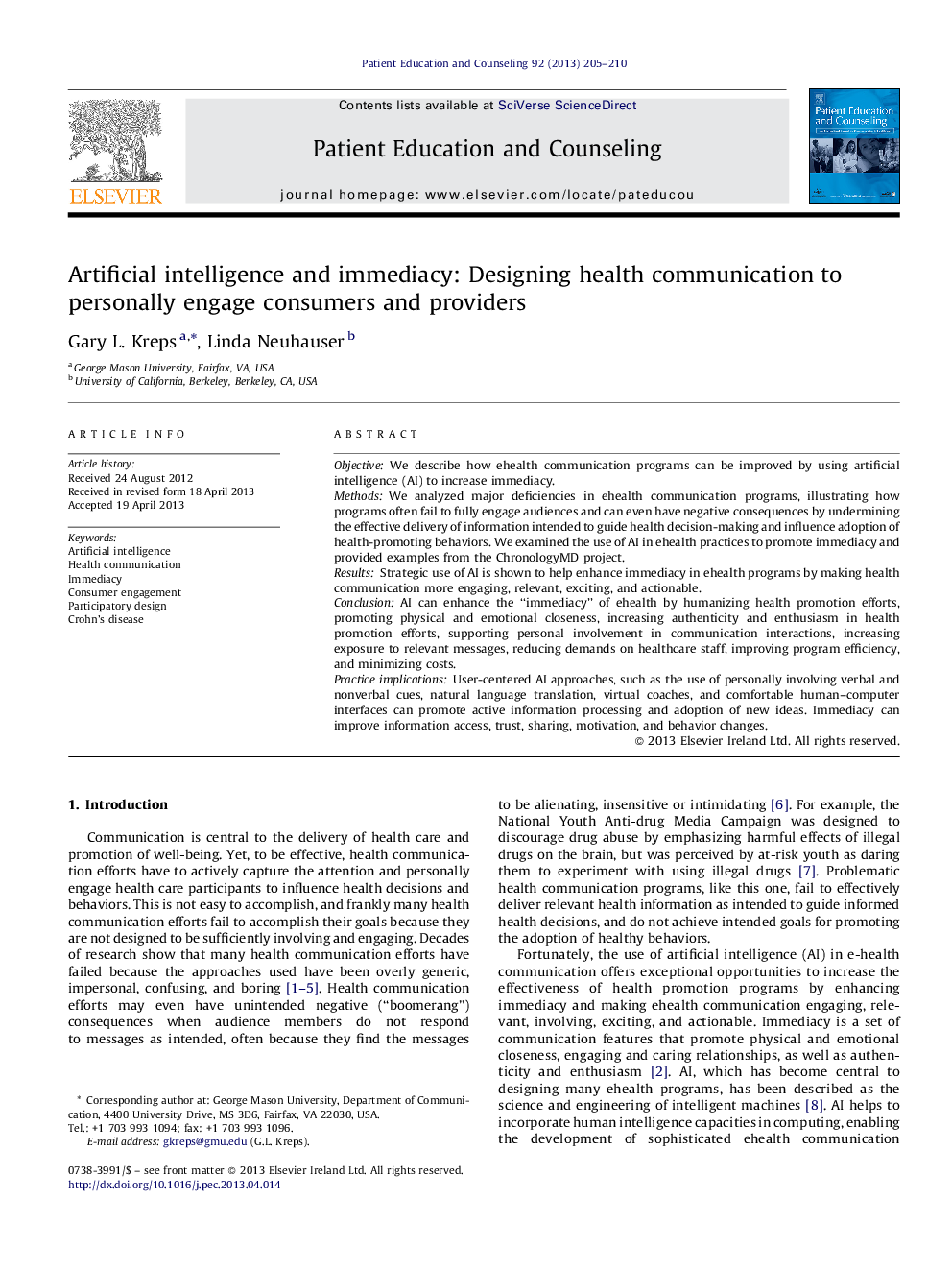| کد مقاله | کد نشریه | سال انتشار | مقاله انگلیسی | نسخه تمام متن |
|---|---|---|---|---|
| 6153123 | 1245999 | 2013 | 6 صفحه PDF | دانلود رایگان |
ObjectiveWe describe how ehealth communication programs can be improved by using artificial intelligence (AI) to increase immediacy.MethodsWe analyzed major deficiencies in ehealth communication programs, illustrating how programs often fail to fully engage audiences and can even have negative consequences by undermining the effective delivery of information intended to guide health decision-making and influence adoption of health-promoting behaviors. We examined the use of AI in ehealth practices to promote immediacy and provided examples from the ChronologyMD project.ResultsStrategic use of AI is shown to help enhance immediacy in ehealth programs by making health communication more engaging, relevant, exciting, and actionable.ConclusionAI can enhance the “immediacy” of ehealth by humanizing health promotion efforts, promoting physical and emotional closeness, increasing authenticity and enthusiasm in health promotion efforts, supporting personal involvement in communication interactions, increasing exposure to relevant messages, reducing demands on healthcare staff, improving program efficiency, and minimizing costs.Practice implicationsUser-centered AI approaches, such as the use of personally involving verbal and nonverbal cues, natural language translation, virtual coaches, and comfortable human-computer interfaces can promote active information processing and adoption of new ideas. Immediacy can improve information access, trust, sharing, motivation, and behavior changes.
Journal: Patient Education and Counseling - Volume 92, Issue 2, August 2013, Pages 205-210
